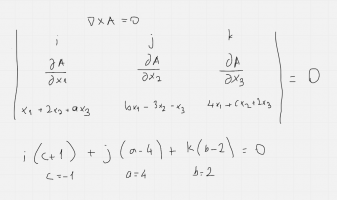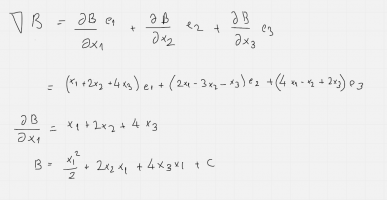Prettygoodmilkshake
New member
- Joined
- Mar 30, 2022
- Messages
- 5
Hi, I am trying to solve this problem. I dont know if my approach is right. I stuck second part of the question.

So I started like this to find a,b,c :

If true up to here;
for the second part of the problem I did this

and similarly for x2 and x3.
Then I stuck. Couldnt bring them together to find B. Any suggestions? Thanks.

So I started like this to find a,b,c :

If true up to here;
for the second part of the problem I did this

and similarly for x2 and x3.
Then I stuck. Couldnt bring them together to find B. Any suggestions? Thanks.
